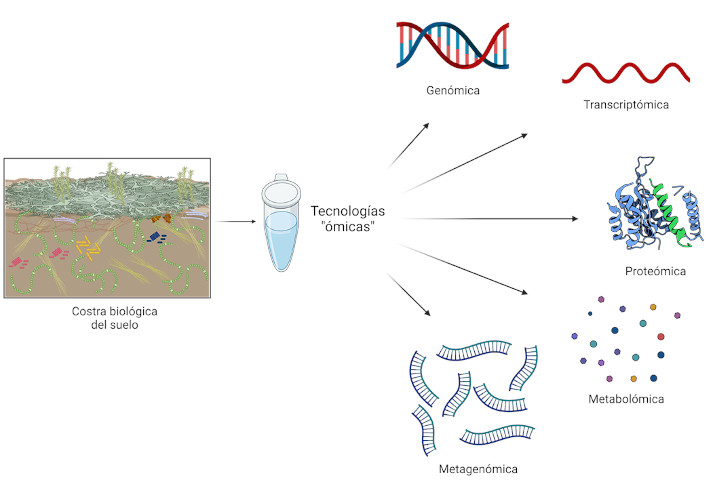Tecnologías ómicas para la exploración de la biocostra del suelo
DOI:
https://doi.org/10.28940/terra.v40i0.1062Palabras clave:
cianobacterias, fijación de nitrógeno, inoculación, restauración ecológica, suelos degradadosResumen
Las tecnologías “ómicas” son herramientas novedosas que facilitan el estudio de las comunidades microbianas de distintos ecosistemas, particularmente de la costra biológica del suelo, también llamada biocostra. Entre estas tecnologías se encuentran la genómica, transcriptómica, proteómica, metabolómica y metagenómica, que son utilizadas para analizar la diversidad y las funciones que llevan a cabo los microorganismos a través del estudio de sus biomoléculas y vías metabólicas. Entre los microorganismos que habitan la biocostra destacan las cianobacterias, las cuales son un grupo de bacterias fototróficas encargadas de realizar procesos importantes en el suelo, tal como la fijación de nitrógeno atmosférico, carbono orgánico, síntesis de clorofila y ficobilinas, así como la producción de exopolisacáridos para mejorar la estabilidad y fertilidad del suelo. Por lo tanto, el objetivo de la presente revisión es el de explorar la diversidad y la función que desempeñan estas comunidades microbianas en la biocostra, particularmente las cianobacterias, destacando los estudios realizados mediante el uso de las tecnologías ómicas. El conocimiento generado en los últimos años a través de las tecnologías ómicas ha demostrado la limitada cobertura que presentan las técnicas moleculares tradicionales, resultando en una subestimación de la diversidad real de las comunidades microbianas. Además, se ha mejorado la comprensión de los procesos ecológicos desarrollados por los microorganismos en beneficio de la biocostra, así como las capacidades funcionales individuales y colectivas, las cuales servirán como línea base para proponer estrategias importantes que solucionen la problemática de la degradación de los suelos.
Descargas
Publication Facts
Reviewer profiles N/D
Author statements
- Academic society
- Terra Latinoamericana

















